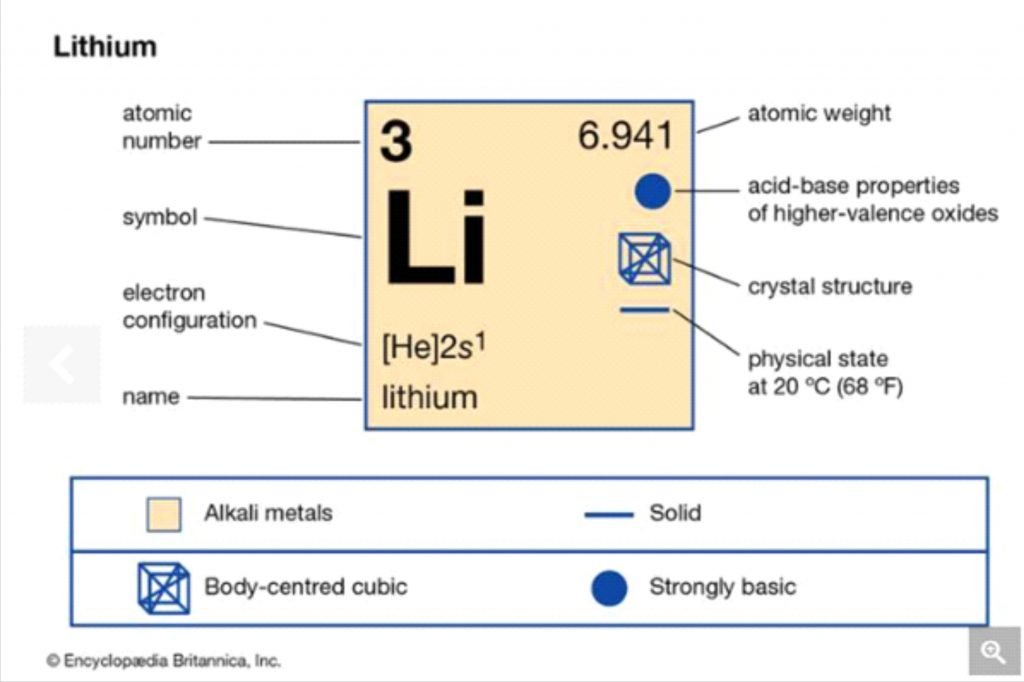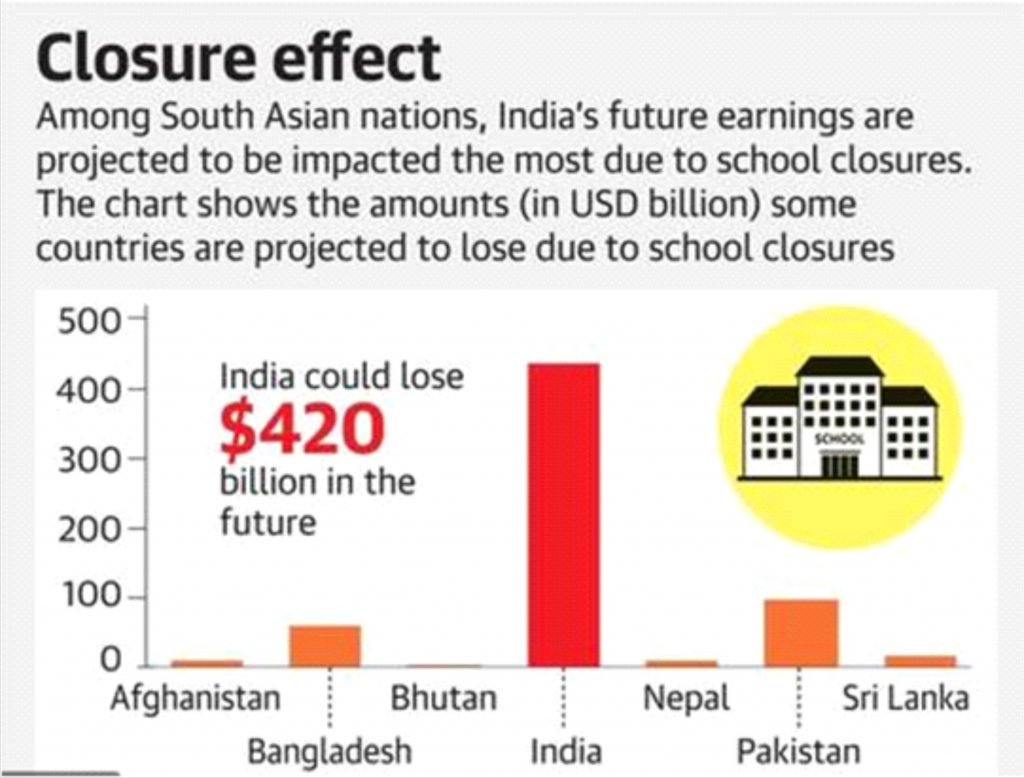Lithium deposit
IN NEWS:
- Recently, the Atomic Minerals Directorate for Exploration and Research (AMD), an arm of the Department of Atomic Energy, has shown the presence of 1,600 tonnes of lithium resources in the igneous rocks of the Marlagalla-Allapatna region of Karnataka’s Mandya district.
- The find in Mandya is extremely small in quantitative terms, but it is an initial success in the attempt to domestically mine the silver-white metal by way of hard-rock extraction of the ore.
ABOUT:
- India has initiated a concerted domestic exploration push for the alkali metal, a vital ingredient of the lithium-ion rechargeable batteries that power electric vehicles (EVs), laptops and mobile phones.
- AMD is carrying out surface and sub-surface exploration for lithium in potential geological domains of the country. India currently imports all its lithium needs.
- The domestic exploration push, which also includes exploratory work to extract lithium from the brine pools of Rajasthan and Gujarat and the mica belts of Odisha and Chhattisgarh, comes at a time when India has stepped up its economic offensive against China, a major source of lithium-ion energy storage products being imported into the country.
FINDINGS:
- The Marlagalla-Allapatna area, along the Nagamangala Schist Belt, which exposes mineralised complex pegmatites (igneous rocks), is seen as among the most promising geological domains for potential exploration for lithium and other rare metals.
- There are, however, two caveats. First, the new find is categorised as “inferred”, one of the three categories into which mineral resources are subdivided, in order of increasing geological confidence.
- The ‘inferred’ mineral resource is the part of a resource for which quantity, grade and mineral content are estimated only with a low level of confidence based on information gathered from locations such as outcrops, trenches, pits, workings, and drill holes that may be of limited or uncertain quality, and also of lower reliability.
- Second, the lithium find is comparatively small, considering the size of the proven reserves in Bolivia (21 million tonnes), Argentina (17 million tonnes), Australia (6.3 million tonnes), and China (4.5 million tonnes).
LITHIUM IN INDIA
- Lithium can be extracted in different ways, depending on the type of the deposit – it is generally done either through solar evaporation of large brine pools or by hard-rock extraction of the ore.
- In India, alongside the rock mining at Mandya, there is some potential for recovering lithium from the brines of Sambhar and Pachpadra in Rajasthan, and Rann of Kachchh in Gujarat.
- The major mica belts in Rajasthan, Bihar, and Andhra Pradesh, and the pegmatite belts in Odisha and Chhattisgarh apart from Karnataka, are the other potential geological domains.

Expenditure budget
IN NEWS:
- The Union Finance Ministry is of the view that higher spending at the stage of uptick in the economy will give a bigger push to growth. This growth is better than what most economists estimated post easing of lockdown restrictions.
ABOUT:
- In pandemic year, government restricted additional spending to less than 1.5 per cent of the GDP but it will expand its spending in financial year 2021-22.
- It will be more an ‘expenditure Budget’ than a revenue Budget; after consultations with various stakeholders.
- The areas where the ministry of Finance is keen to increase spending are healthcare and construction-related activities, be it infrastructure or housing.
- Public spending in these activities have a huge trickle down effect, and benefit many industries from cement to steel besides creating durable jobs.
- High spending will mean high growth, and this itself will be an antidote to bring deficit down.
ECONOMIC GROWTH SO FAR:
- With the GDP expected to post a negative growth of 7.7 per cent in 2020-21, the government expects a strong rebound next financial year. But even a 14 per cent in 2021-22 (over 2020-21), would mean a growth rate of not more than 5.5 per cent over 2019-20.
- While the combined debt of the Centre and states as a percentage of GDP stood at 72 per cent last year, it is expected to touch 85 per cent given the shrinking of the GDP this year, and higher government borrowings.
- It is in this backdrop that the Finance Ministry may announce making debt-GDP ratio as the primary target for fiscal policy, and provide a new glide path for reducing debt levels.
- The Revised Estimate for fiscal deficit for the current financial year may be around 6.5 per cent of GDP.
- In making projections for next year, the government may budget only normal increases in departmental and ministerial allocations given that capacities to spend cannot improve suddenly
- Towards this end, the Finance Ministry is also considering a review of the Fiscal Responsibility and Budget Management Act in line with the recommendations of the NK Singh panel, which suggested that the debt-GDP ratio (as opposed to fiscal deficit) be taken as the primary target for fiscal policy. Under the amended FRBM Act, the government was expected to reduce its fiscal deficit to 3 per cent of GDP in 2020-21.
-
- But while presenting the Budget, Finance Ministry had invoked the escape clause for having deviated from the target for 2019-20 and 2020-21 to the extent of 0.5 per cent of GDP; the Budget Estimate of fiscal deficit for 2020-21 was 3.5 per cent of GDP.
KEYNES MODEL
- British economist John Maynard Keynes had argued that free markets cannot be relied upon to fuel GDP growth when there is a recession as India and the world witnessed in 2020 following the Covid-19 pandemic.
- In 2020, consumer confidence hit a new low, and they avoided discretionary spending; this led to a demand collapse, forcing firms to stop investing. In depressing times like these, Keynes said only government intervention through higher spending can revive demand and restore stability.
Relax detention norms to prevent drop-outs
IN NEWS:
- According to an Education Ministry, schools must relax detention norms in order to prevent drop-outs in a year when COVID-19 has disrupted the teaching and learning process.
- Guidelines have been prepared “in order to ensure that school-going children have access to education with quality and equity and to minimize the impact of the pandemic on school education across the country”.
ABOUT:
- The Ministry directed the States to conduct comprehensive door-to-door surveys to identify children out of school and migrant students, and prepare an action plan to prevent increased drop-outs, lower enrolments, loss of learning and deterioration in the gains made in providing universal access, quality and equity in recent years.
- Schools shut down in mid-March 2020, just before the COVID-19 lockdown. Some States have started reopening physical classes for high school students over the last two months, but most of India’s 25 crore students have spent the last 10 months at home.
- While some have access to online classes, the majority are learning from televised classes, WhatsApp teaching, and learning on their own.
- Globally, the United Nations had estimated that almost 24 million school age children are at risk of dropping-out from the educational system due to COVID-19 this year.

Vanadium
IN NEWS:
- Recently, Geological Survey of India (GSI) has carried out an exploration in palaeo-proterozoic carbonaceous phyllite rocks in the Depo and Tamang areas of Papum Pare district in Arunachal Pradesh and placed this eastern Himalayan State on the vanadium map of the country. Now, this state likely to become India’s prime producer of vanadium.
- It is recovered as a by-product from the slag collected from the processing of vanadiferous magnetite ores (iron ore).
ABOUT:
- This was the first report of a primary deposit of vanadium in India, with an average grade of 0.76% V2O5 [vanadium pentoxide].
- India is a significant consumer of vanadium, but is not a primary producer of the strategic metal.
- India consumed 4% of about 84,000 tonnes of vanadium produced across the globe in 2017.
- Largest deposits of vanadium: China, Russia and South Africa.
METAL:
- It is a hard, silvery-grey, malleable transition metal.
- The elemental metal is rarely found in nature. It is recovered as a by-product from the slag collected from the processing of vanadiferous magnetite ores (iron ore).
- It is a high-value metal used in strengthening steel and titanium.

“Period Room”
IN NEWS:
- In a bid to help the women, residing in congested slums, during their menstruation days, a ‘period room’ has been set up at a public toilet by the Thane Municipal Corporation in collaboration with an NGO Muse Foundation, at a slum in Shanti Nagar locality of Wagle Estate area in Thane.
ABOUT:
- The period room is equipped with several basic facilities, and it aims to facilitatemenstrual hygiene among women dwelling in slums.
- It is first-of-its-kind initiative.
- The facility is set up keeping in mind the women living in small houses, who do not have a separate bathing section.
- Many times they find it difficult to change during periods. This facility will be a boon for such women and go a long way in promoting good hygiene.
- The NGO would be taking up the task of informing the women of the slum about the existence of such a room.

